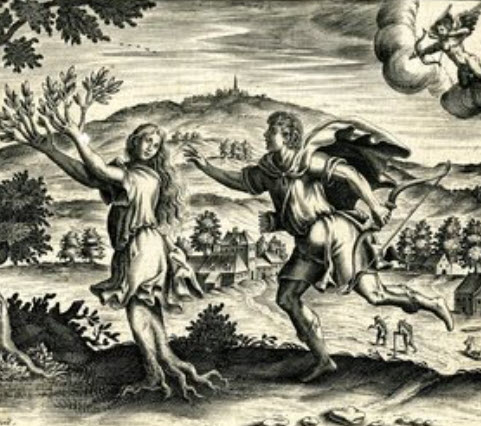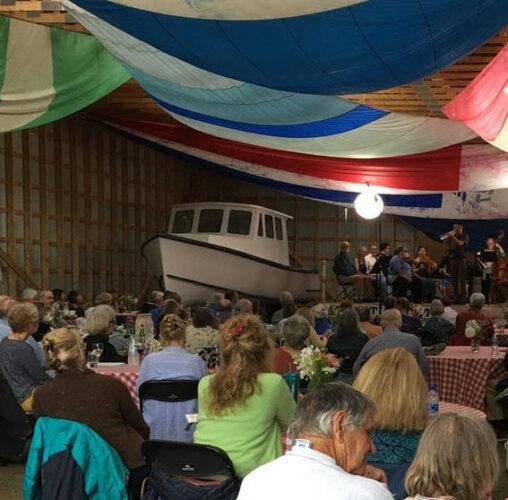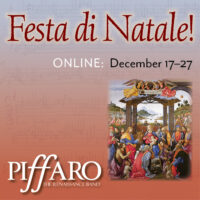by Amelia Sie
Published May 9, 2025
Editor’s note: Violinist Amelia Sie, with harpsichordist Kevin Devine and cellist Nathan Whittaker, were among the outstanding performers at the 2024 EMA Summit. They were part of EMA’s Emerging Artists Showcase, connecting early music’s rising stars with new audiences and presenters. Applications for the 2025 Virtual Emerging Artists Showcase will be accepted through May 26. Apply today!
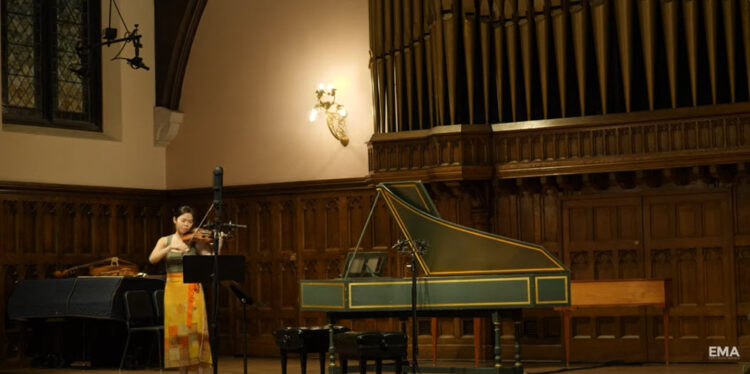
Call it ‘scordatura’ or ‘cross-tuning’ — a down-home technique for violin and fiddle
Last fall, I had the honor of performing my I’m Picking Up Good Vibrations program at the 2024 EMA Summit in Cleveland. The creation of this program began with a simple desire: to explore scordatura in Baroque music — a technique I had not used before.
Scordatura is the practice of tuning a stringed instrument differently from its standard tuning. In doing so, we can manipulate how the instrument vibrates and rings, creating a completely different sonic experience. For example, we can re-tune the violin, normally GDAE — with G the lowest string and E at the top — to AAAE. In this example, we achieve two things: (1) Any time we play a note that fits in an A Major or A minor chord, the violin will ring much more than in standard tuning, and (2) we can play a drone with one string while we play the melody on another, imitating drone-like instruments such as the hurdy-gurdy, musette, or bagpipe.
The best-known example of scordatura in the violin repertoire comes from Heinrich I.F von Biber’s Rosary Sonatas, a set of 15 sonatas for violin and continuo, plus a concluding solo passacaglia. Each was composed for a different tuning. Through these tunings, Biber offers soundscapes that pair, in the score, with the copper-engraved vignettes at the beginning of each sonata, depicting an event in the life and death of Jesus — the Mysteries of the Rosary.
Initially, this program was simply an excuse for me to learn one of the Rosary Sonatas. But it quickly became an exploration of scordatura music beyond the Baroque, and an offering of an expanded definition of what we consider the “classical music” canon. Through my research, I came to learn that the practice of scordatura extends far past the Rosary Sonatas, and I became especially interested in its prevalence in fiddle music, where it’s called “cross-tuning.” Whereas the concept of scordatura is considered more of an extended technique in classical performance, cross-tuning is a normal part of fiddling.
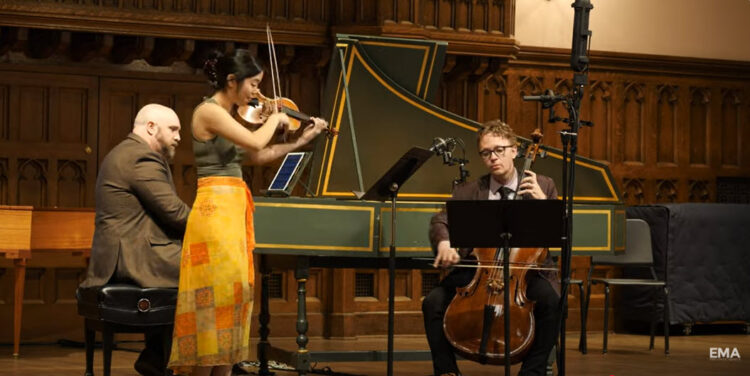
Fiddlers around the globe understand that we can fundamentally change how a tune is experienced through cross-tuning, with numerous examples in Norwegian, Scottish, Irish, and Appalachian fiddling. Fiddler Chris Haigh has an excellent website resource, Fiddling Around the World, that details the different cross-tuning practices in various fiddle communities.
In developing the program, I chose to limit myself to just two different tunings, and therefore two different violins — to limit the time spent re-tuning, to minimize the stress on the instruments, and, not least, to make practicing and traveling manageable. (Special thanks go to luthier Carolyn Foulkes, who lent me a beautiful Petz violin for this project.)
Limiting myself to two instruments meant I had to find two tunings with examples in both Baroque music and fiddle music, and ended up with pieces in AEAC-sharp and GDAD tuning. Deciding which tunings to use felt like a Choose Your Own Adventure book.
Scordatura is considered an extended technique in classical performance, whereas cross-tuning is a normal part of fiddling
For the pieces in AEAC-sharp, I started with the Baltzar Suite for Scordatura Violin, as it is the first example of a piece written solely in scordatura for solo violin. Knowing I wanted to include a Rosary Sonata, the natural next step was to include the fifth from Biber’s collection, “The Finding of Jesus in the Temple,” which uses the same tuning. I was then led to the New Caledonian Pocket Companion (Book 10), where composer James Oswald includes six fiddle tunes in AEAC-sharp tuning, one of which I chose to include in the program (“Kennet’s Dream”).
For GDAD, I originally planned to include an old-time tune, “Ora Lee,” in celebration of the American fiddling tradition. Meanwhile, the Baroque side of my program had taken on a delightful (and unplanned) German theme, and I therefore chose to pair Johann Joseph Vilsmayr’s Partita No. 5 with “Ora Lee.” However, I decided the EMA Showcase performance was an opportunity to celebrate not just what music already exists but also that which is new. Jimmy Drancsak — an inimitable violinist, violist, and fiddler — graciously composed “Waffles n’ Grimm,” a GDAD tune named after my cats, which received its world premiere at the Showcase. (Not to worry: “Ora Lee” still got her moment in the spotlight when I performed the full-length program at New York’s The Bohemians concert series in March.)
I have also been asked to explain the title I’m Picking Up Good Vibrations. Honestly, there really isn’t much to it. I wanted a name that captured the physical experience of listening to scordatura music, but neither I nor ChatGPT could come up with an effective name. The closest I could come to something satisfactory was “Good Vibrations.” However, this is also a Beach Boys song (and for the Bostonians reading this, you know why I can’t use this title #iykyk). But wait! In said song, our favorite Boys sing the line “I’m picking up good vibrations,” which seemed like the perfect fit. It encompassed all that I felt was significant about this program, while paying a silly little tribute to a wonderful song that’s as good now as it was when it was released in 1966. So that’s it. I hope y’all got the reference. If you didn’t, go listen to the song right now!
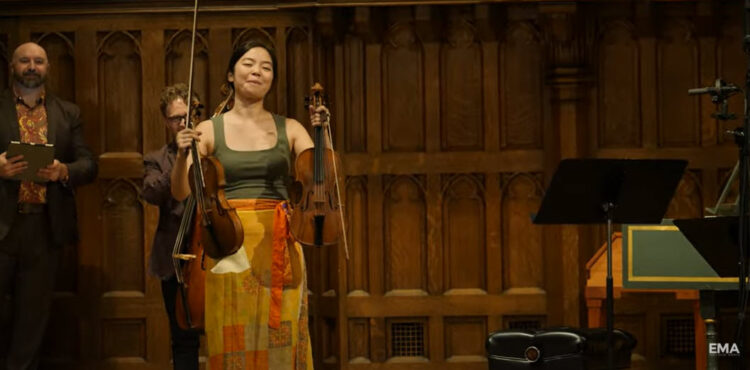
Amelia Sie performs on Baroque and modern violins. She was awarded a 2024 EMA Engagement Award for her interactive project “Baroque Explorers: Unleashing Creativity in the Young Musician Through Improvisation.” Her bachelor’s and master’s degrees are from New England Conservatory, with a master’s degree in Historical Performance from the Juilliard School. She was an inaugural Stone Fellow at Boston’s Handel and Haydn Society.

